17 April 2025
The term ‘Silver Arrows’ is one of the most evocative in motor racing, so much so that Mercedes-Benz still uses the phrase to describe its Formula 1 cars, despite wearing only a little silver in the livery. It’s easy to see why, as the name goes back more than 90 years, and links to the German giant’s highly successful racing efforts of the time.
The Silver Arrows take flight
It was at the 1934 Eifelrennen, held at the legendary Nurburgring circuit, that the Silver Arrows were born. At the time, racing colours were determined by the country of origin, which in this case was German white. However, the Mercedes cars were over-weight, and to help shave some pounds from the machines, it was decided to strip the paint, revealing the bare aluminium bodywork beneath.
Despite a delay because of weather, the Mercedes-Benz W25 models raced by Manfred von Brauchitsch and Luigi Fagioli performed well against the likes of Auto Union and Alfa Romeo. Fagioli’s No. 22 car was forced to retire on the penultimate lap, but von Brauchitsch’s No. 20 machine held on for the win.
It wasn’t quite the start of a glittering era, as the Eifel race was the only win in 1934, but the following year, at the hands of Rudolf Caracciola, it won six Grand Prix, with Fagioli adding three more. Before the creation of the world championship, Caracciola became European Champion in ’35, adding to his German Championship.
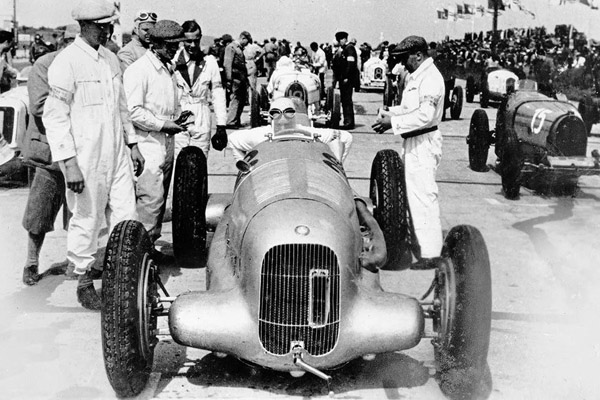
The W25 was raced into 1936, but Auto Union dominated that year with its rear-engined, rear-wheel drive Type C V16 racer, prompting Mercedes to develop the W125 for 1937, allowing Caracciola to again take the European title. With further developments through to 1939, the German giants were trading blows, competing to become the best with the backing of the German state, until the Second World War broke out, putting racing efforts to bed.
Post war return
It wasn’t until the 1950s that Mercedes-Benz returned to international motor racing, again with the bare-metal ‘paint’ scheme, and a fierce R&D-led programme. In 1954, Mercedes entered its W196 into Grand Prix racing, having built its predecessor, the W194, for endurance races. The W194 proved highly successful, taking wins at the Le Mans 24h race, Eifelrennen, and Carrera Panamericana, laying the foundations for the dominant W196.
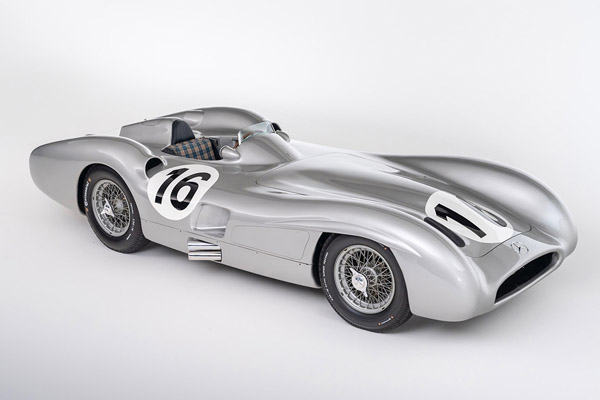
Not only did Mercedes-Benz have the best car, but in the hands of Juan Manual Fangio and Sterling Moss, it had two of the finest drivers ever to sit behind a steering wheel, as well as other exceptional drivers. And the combination proved almost unstoppable over the course of the 1954 and 1955 F1 Championship seasons, winning nine out of 12 races entered, and taking both titles.
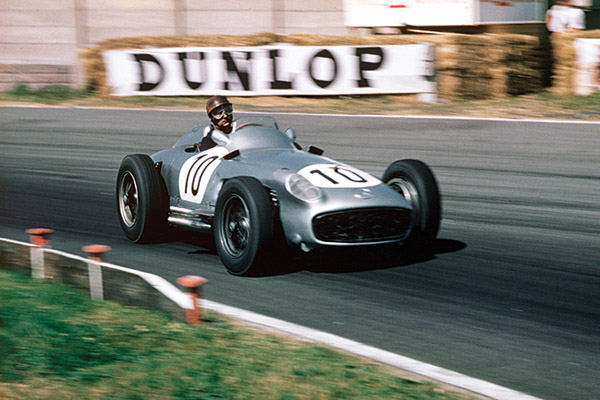
Photograph Courtesy of "Motor Sport Magazine"
It was a highly sophisticated machine too, with advanced fuel injection helping produce 340hp from a 2.5-litre engine, at 10,000rpm. It was also developed to be able to run in a streamlined configuration, launching at the high-speed Monza Grand Prix in 1954 draped in smooth bodywork, as well as being able to race in open wheel configuration.
Had it not been for tragedy, there is no telling how long Mercedes’ dominance would have lasted. Instead, racing at the 1955 Le Mans 24h race, a series of unfortunate events caused a crash that would see debris fly into the crowd, killing more than 80 spectators and injuring over 100 more.
It was a Jaguar pulling in for a pit stop that caused an Austin-Healey to pull in to the path of an overtaking Mercedes-Benz 300 SLR, with the German car rear-ending the Austin-Healey and launching itself into the air, bouncing over a protective earth bank, and breaking up on impact in the spectator area, killing the driver, Frenchman Pierre Levegh, instantly.
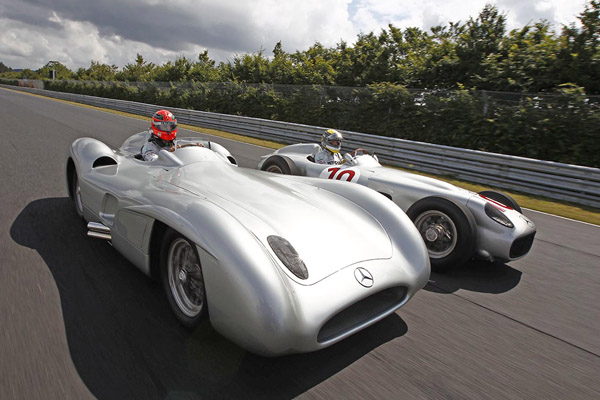
After the race, an immediate ban on motor racing was put in place temporarily in much of Western Europe, and Mercedes-Benz withdrew from motorsport altogether at the end of the season, until 1985, marking the second end of the Silver Arrows era.
The third Silver Arrows era
By the mid-Eighties, Mercedes-Benz had decided to enter a full works team into motorsport again, having dabbled with tuning firm AMG in the late 1960s into the 1970s. In 1985, Mercedes returned officially as engine supplier, partnering with Sauber in Group C Endurance racing with the Sauber C8. It wasn’t until the C9 came along in 1987 however that the Mercedes-Benz name was on a car capable of winning races, and this it did with aplomb from 1988.
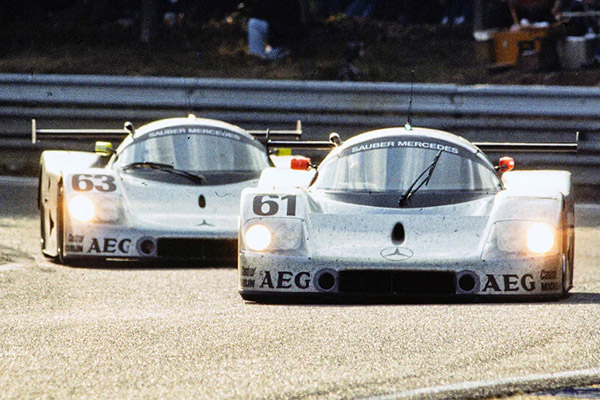
Photograph Courtesy of "Motorsport Images"
The official Team Sauber Mercedes cars won the World Sportscar Championship opening race in 1988 in Jerez, as took the podium in the next three races in Spain, Italy, and Britain, before winning again at Brno, the Nurburgring, Spa, and in Australia. It wasn’t quite enough for the team to take the championship, which instead went to Jaguar, but the following year went on to take the Blue Riband event, winning the Le Mans 24h race in 1989. It also took the 1990 World Sportscar Championship, with the C11, withdrawing from endurance racing in 1991 and shifting focus to the DTM.
However, it returned to top-level endurance racing with the inaugural FIA GT Championship in 1997, its CLK GTR winning the title that year, as well as the CLK-LM repeating the feat a year later. Mercedes entered the 1999 season with victory in mind again and a new, sleeker car in which to do it with in the shape of the CLR.
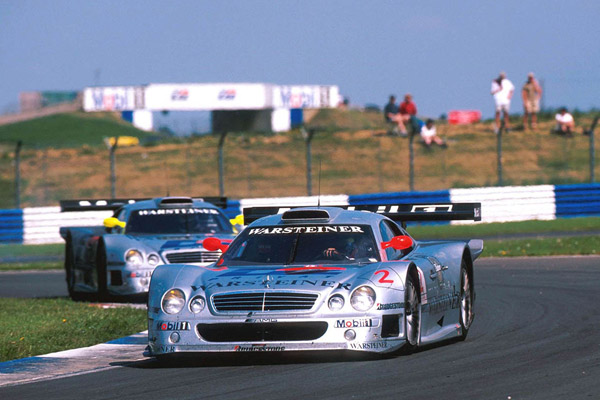
Photograph Courtesy of "Motorsport Images"
However, Mercedes’ Le Mans luck struck again, with the car flipping not once, but twice, over the course of the weekend, becoming airborne along the high-speed Mulsanne straight – the second time clearing the safety barriers and crashing into the trees. Again, Mercedes-Benz cancelled participation and withdrew from sportscar racing, understandably so.
The final chapter is still being written, with a return to top-flight racing in 2010 with its own Formula One team. It had supplied engines to teams for years, and successfully so, but before the start of the 2010 Formula One season, Mercedes’ parent company Daimler bought a minority stake in the Brawn GP team, itself a single-season entity arising from the withdrawal of Honda before the start of the 2009 season.
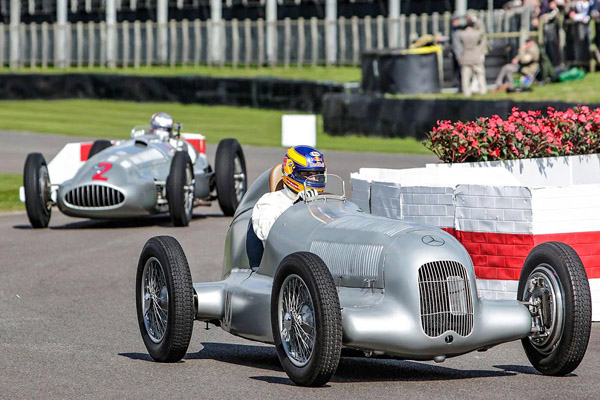
Famously, Brawn defied the odds and went on to win both constructors’ and drivers’ titles that year, using a Mercedes-Benz engine. The team was renamed Mercedes-AMG Petronas, and brought in two German drivers in the shape of Michael Schumacher and Nico Rosberg. Initially uncompetitive, with the right investments and drivers brought in, the team went on to deliver numerous titles, both as constructor, as well as Rosberg’s single championship win, as well as six of Sir Lewis Hamilton’s seven (to date) titles.

COMMENT